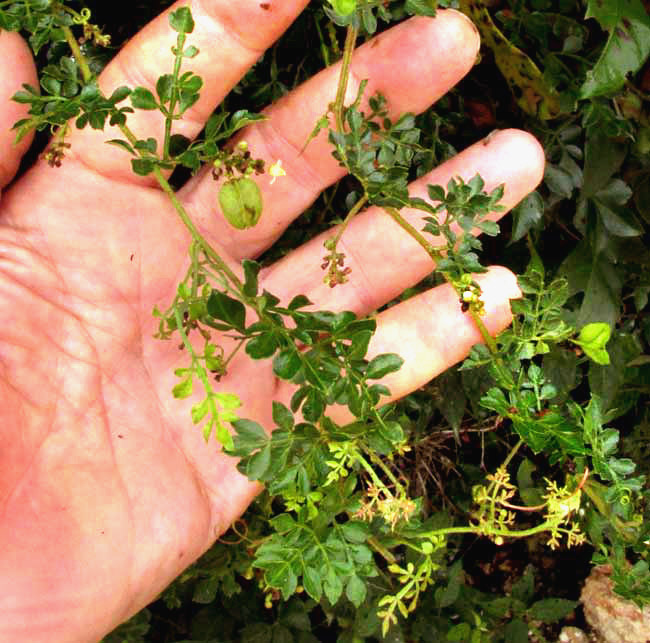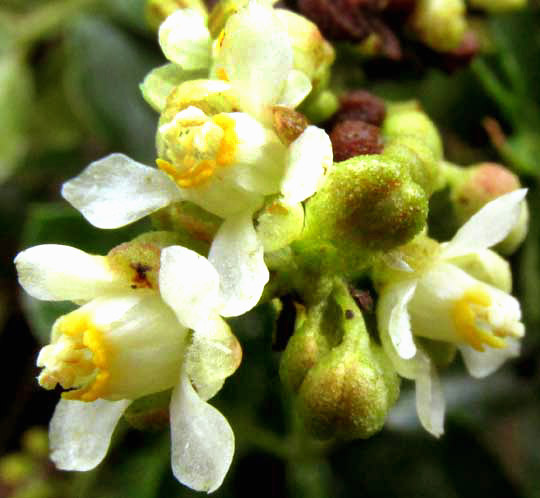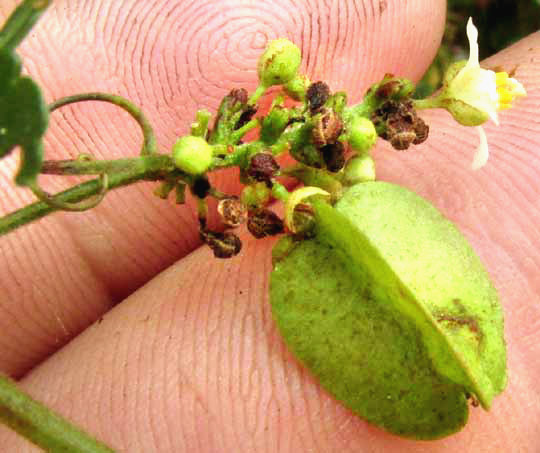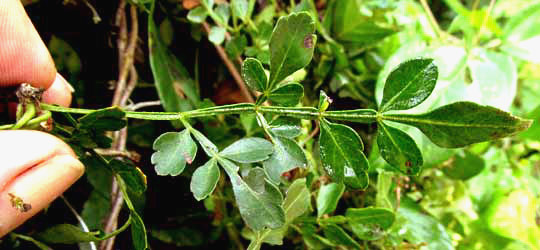Excerpts from Jim Conrad's
Naturalist Newsletter

from the November 29, 2015 Newsletter issued from Hacienda Chichen Resort beside Chichén Itzá Ruins, central Yucatán, MÉXICO
MAIDENHAIR SERJANIA
Nowadays treetops in this area occasionally are overgrown with a prodigiously white-flowering vine called Serjania. You can see the effect and read about the species at www.backyardnature.net/yucatan/serjana.htm.
On that page you can see that the vines' twice-compound leaves are about the size of a hand. This week a vine turned up with leaves, flowers and fruits all structured much like the Serjania profiled above, and definitely a member of the genus Serjania, but this vine's features were all tiny in comparison with those of the one shown above. Above, look at the size of this week's Serjania compared to my hand.
The vine created a dense, dark clump on a roadside wall of shrubs and small trees and hardly grew head high. At first I thought it was a deformed individual of the usual Serjania, maybe suffering from witch's-broom disease, which produces too many branches too stunted to function right. However, the tiny flowers seemed to be fully functional, as as evidenced below":

In fact, already some typical and healthy looking Serjania three-winged fruits were forming, seen below:

And the leaves, though small, showed no deformation, as typically is the case with witch's-broom-infected plants, as you can see below:

I was eager to go online to visit the Flora de la Peninsula de Yucatán to see whether such a dwarf-type Serjania might be listed. Their Serjania page lists ten Serjania species. My eye was drawn to the first on the list, SERJANIA ADIANTOIDES, because that species name adiantoides translates to "shaped liked a maidenhair fern," and with my first glance at this small Serjania's leaves, I'd thought of the maidenhair fern. You can see the frond of a maidenhair fern called Venus's-Hair at www.backyardnature.net/n/x/adiantu2.htm.
In the end, that's what our little vine proved to be, Serjania adiantoides, a species endemic just to the Yucatan Peninsula and adjacent Guatemala. It has no established English name, but both its Latin name and its appearance cries out for the name Maidenhair Serjania.
The Maya call it Buy-ak, and it's reported to be used medicinally for eye diseases.